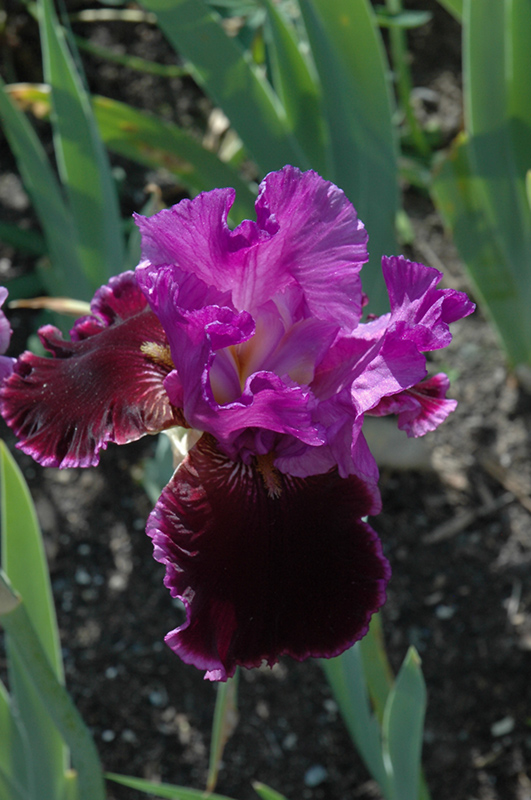Brunswick
422 Bath Road
Brunswick, ME 04011
1-800-339-8111
207-442-8111
Falmouth
89 Foreside Road
Falmouth, ME 04105
1-800-244-3860
207-781-3860
Cumberland
201 Gray Rd (Route 100)
Cumberland, ME 04021
1-800-348-8498
207-829-5619
Plant Height: 20 inches
Flower Height: 30 inches
Spacing: 18 inches
Sunlight:
![]()
![]()
Hardiness Zone: 3a
Group/Class: Re-blooming Tall Bearded
Description:
This charming iris produces violet-blue blooms with deep purple-red falls and orange beards; a stunning addition to the perennial border; also excellent massed in groupings in the garden; will quickly form dense colonies; tends to re-bloom in summer
Ornamental Features
Violet Turner Iris has masses of beautiful fragrant violet flag-like flowers with blue overtones and deep purple falls at the ends of the stems from mid to late spring, which are most effective when planted in groupings. The flowers are excellent for cutting. Its sword-like leaves remain bluish-green in color throughout the season.
Landscape Attributes
Violet Turner Iris is an herbaceous perennial with an upright spreading habit of growth. Its medium texture blends into the garden, but can always be balanced by a couple of finer or coarser plants for an effective composition.
This plant will require occasional maintenance and upkeep, and should be cut back in late fall in preparation for winter. Deer don't particularly care for this plant and will usually leave it alone in favor of tastier treats. Gardeners should be aware of the following characteristic(s) that may warrant special consideration;
- Insects
Violet Turner Iris is recommended for the following landscape applications;
- Mass Planting
- General Garden Use
Planting & Growing
Violet Turner Iris will grow to be about 20 inches tall at maturity extending to 30 inches tall with the flowers, with a spread of 20 inches. When grown in masses or used as a bedding plant, individual plants should be spaced approximately 18 inches apart. It grows at a medium rate, and under ideal conditions can be expected to live for approximately 10 years. As an herbaceous perennial, this plant will usually die back to the crown each winter, and will regrow from the base each spring. Be careful not to disturb the crown in late winter when it may not be readily seen!
This plant does best in full sun to partial shade. It does best in average to evenly moist conditions, but will not tolerate standing water. It is not particular as to soil type or pH. It is somewhat tolerant of urban pollution. This particular variety is an interspecific hybrid. It can be propagated by division; however, as a cultivated variety, be aware that it may be subject to certain restrictions or prohibitions on propagation.

